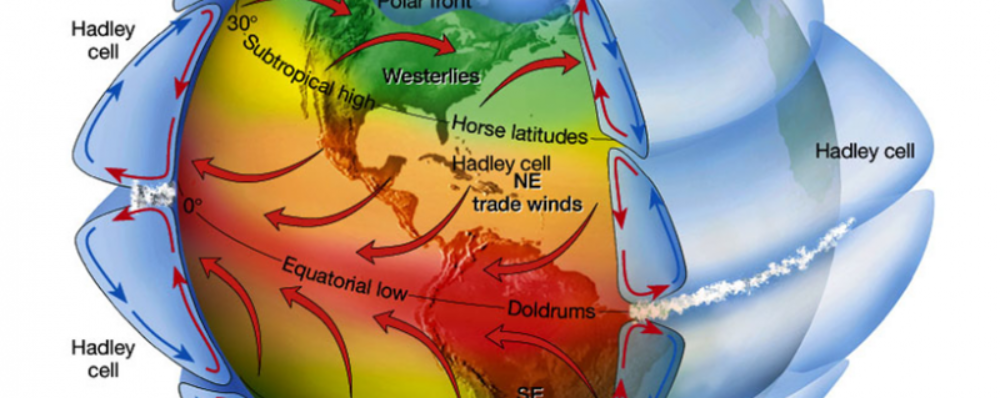Many important features of Earth’s large-scale atmospheric circulation are connected to the width of the “tropical belt”, including the locations of the subtropical dry zones and the midlatitude jet streams. These phenomena exert a strong influence on regional surface climates in both hemispheres, and even small changes in their position may have important societal and ecological consequences. It is therefore crucial to understand whether there have been changes in the width of the tropical belt over the recent past, and, if so, what factors have contributed to these changes.
There is growing evidence that “tropical widening” has occurred over the past ~40 years. However, there is an order of magnitude disagreement among published rates of tropical widening, which range from a few tenths up to several degrees latitude per decade. It is unclear whether this large range reflects differing physical aspects of the atmosphere, the use of different methodologies to define the tropical belt, or the use of different observational datasets (e.g. satellite, in situ datasets, meteorological reanalyses) and time periods. Furthermore, historical tropical widening exceeds that predicted by global climate model (GCM) simulations of the recent past, which calls into question the basic understanding of this phenomenon.
These outstanding issues motivated a recent American Geophysical Union Chapman Conference on “The Width of the Tropics: Climate Variations and Their Impacts” in 2015 [Davis et al., 2016]. A key recommendation from the meeting is that the interrelationships between the diverse array of tropical width metrics used in the literature need to be better understood in order to explain the discrepancy among past tropical widening estimates and to provide clarity regarding future projections. This ISSI team will fulfill this goal by conducting the first systematic intercomparison of tropical width diagnostics.
